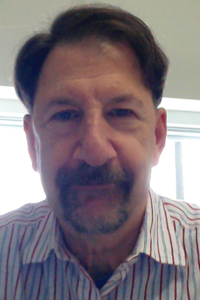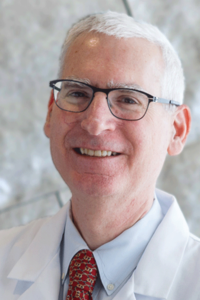[mom_video type=”vimeo” id=”560461698″]
In the summer of 1921, Frederick G. Banting, MD, and his team at the University of Toronto isolated and identified insulin. The diabetes world has never been the same.

Before insulin, type 1 diabetes was a death sentence, said Peter Arvan, MD, PhD, Division Chief of Metabolism, Endocrinology & Diabetes, University of Michigan.
“My dad had type 1 diabetes, discovered right at the time insulin became available as a pharmaceutical. It saved his life,” Dr. Arvan said. “There have been extraordinary developments in diabetes over the last 100 years. With insulin pumps for continuous infusion and continuous glucose monitoring, you can achieve a normal lifespan, like a person who has normal pancreatic insulin secretion. So for type 1 diabetes, insulin has been transformative.”
Dr. Arvan will open a unique Scientific Sessions symposium, Insulin at Its 100th Birthday, by examining changing views of how insulin is made within the pancreas. C. Ronald Kahn, MD, Chief Academic Officer and Head of Integrative Physiology and Metabolism at the Joslin Diabetes Center and the Mary K. Iacocca Professor of Medicine, Harvard Medical School, will explore the evolving understanding of insulin action. And Michael A. Weiss, MD, PhD, MBA, Chair of Biochemistry & Molecular Biology, Indiana University School of Medicine, will discuss future therapeutic uses for insulin.
The two-hour session begins at 1:45 p.m. ET on Saturday, June 26, and includes a live video question-and-answer period.

“The discovery of insulin wasn’t just an inflection point in diabetes,” Dr. Weiss said. “The discovery of insulin represented a seminal change in the public’s perception of medical research. It was the start of molecular medicine. It was the start of public and private support for government-sponsored medical research around the world. The discovery of insulin in 1921, and then penicillin, were landmark events at a fundamental level for researchers, for clinicians, and for patients.”
Before insulin, the only choice for people with diabetes was how to die, Dr. Weiss noted. Low-nutrient diets could slow progression, but there were no successful treatments.
The last century has brought successive waves of improved insulin formulations and delivery devices that have improved treatment, outcomes, and quality of life for type 1 diabetes patients, Dr. Arvan noted.
“The role of insulin in type 2 diabetes is more complex,” he continued. “Where 100% of people with type 1 need insulin, only about a third of people with type 2 need it. But when you factor in the prevalence of type 2—about 10 times that of type 1—there are still more people with type 2 diabetes taking insulin than type 1.”
Insulin also has had profound effects on the two-thirds of type 2 diabetes patients who are not taking it. Ongoing research into insulin secretion and action has led to an evolving armamentarium of non-insulin agents for type 2 diabetes, from sulfonylureas to sodium-glucose cotransporter-2 (SGLT2) inhibitors and glucagon-like peptide-1 (GLP-1) receptor agonists.
In type 1 diabetes, some pancreatic cells continue to produce proinsulin, although they fail to convert this precursor into active insulin, Dr. Arvan said. Restoring the ability of surviving beta cells to convert proinsulin into insulin might reduce the need for exogenous insulin.
Type 2 diabetes is a complex, interactive web of hormones that link the gut, brain, pancreas, and other tissues to affect appetite, food preferences, insulin secretion, insulin sensitivity, blood glucose levels, and other factors. There is growing evidence that early and aggressive lifestyle interventions can reverse early type 2 diabetes and potentially cure type 2 diabetes for a lifetime.
“The discovery of insulin was a slow, progressive start to a rolling succession of miracles and discoveries in scientific medicine,” Dr. Weiss said. “When I was an assistant professor, my department chair told me that everything was already known about insulin because we knew its crystal structure and the location of every atom. What we didn’t know was that newly discovered structure was an inactive analogue form. Insulin is 100 years old, but we are still unravelling the secrets.”
VIEW THIS PRESENTATION
Already registered?
View this presentation at ADA2021.org
Not yet registered?
Register now to access all presentations from the Virtual 81st Scientific Sessions